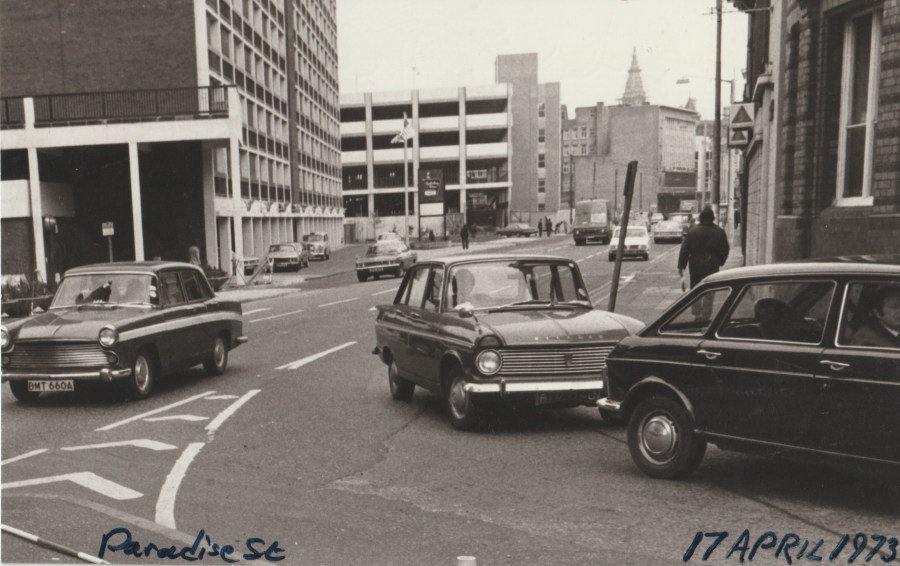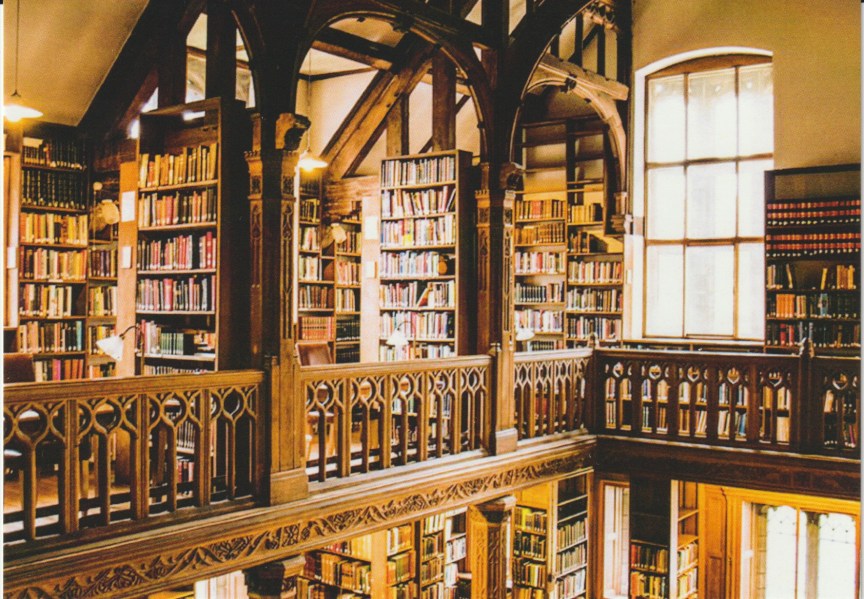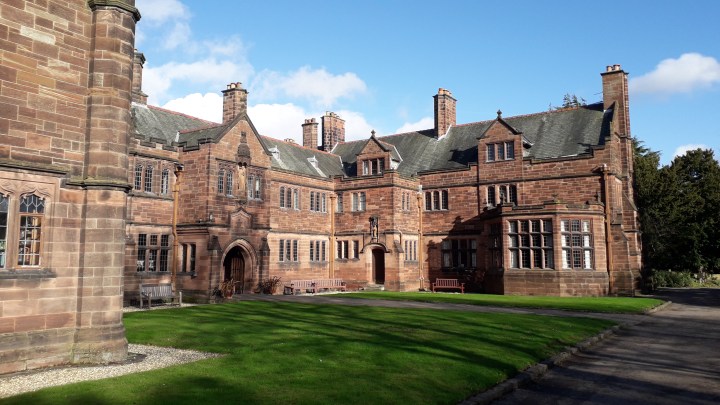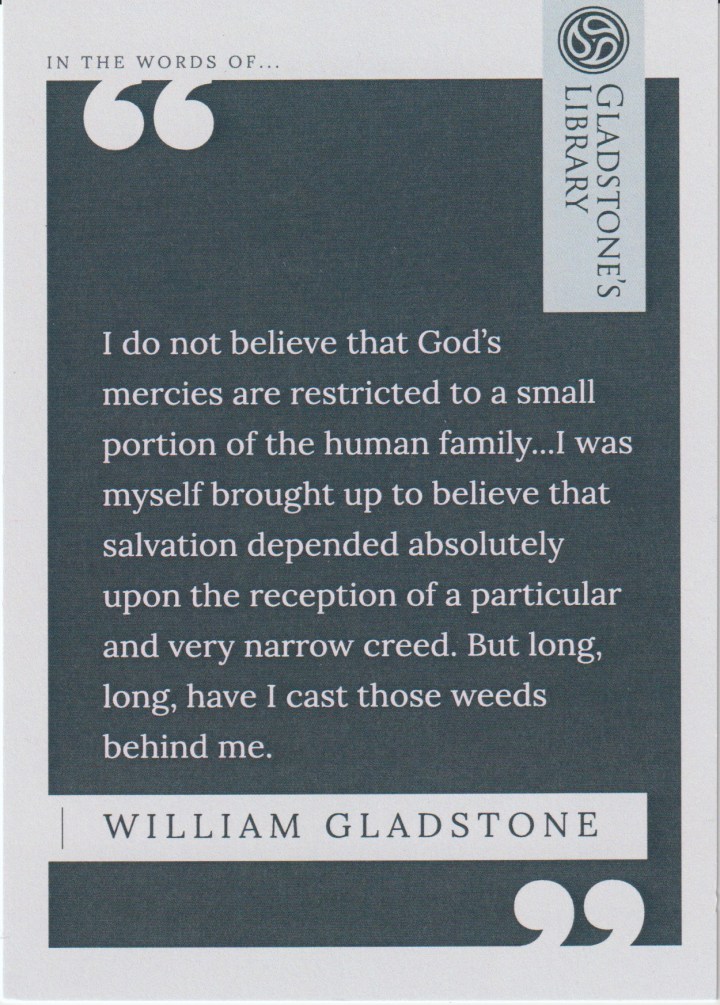I bought this black and white print of a view of Paradise Street dated 17 April 1973 for a small amount on eBay recently. I was interested in seeing it because Paradise Street as it was before the building of the Liverpool 1 shopping development has been so completely obliterated. It is today forgotten and it takes some effort to recall it to mind. Not that Paradise Street in the 1970s deserves to loom large in anyone’s memory, even at the time it had the feeling of something like a backlot to the city centre, a place where there was nothing much to see, a place that existed as an adjunct to the streets and places that mattered.
A lot of it was car parks and this picture clearly shows the new multi-story car park which was then just being completed in 1973. A brutal and functional building, it wasn’t very pleasant although it was handy enough. Its contemporary neighbour the Holiday Inn, seen on the left of the photograph, was little better to look at. But the multi-story wasn’t the only car park on Paradise Street. On the opposite side of the road, not visible in the picture, was a street-level car park complete with parking meters. I can’t be the only person straining to remember this entirely forgettable piece of streetscape because another photograph of Paradise Street featuring the corner of the street-level car park sold just after this one on eBay for about £5. But that car park must have been somewhere near the site of the Paradise Street chapel of 1791.
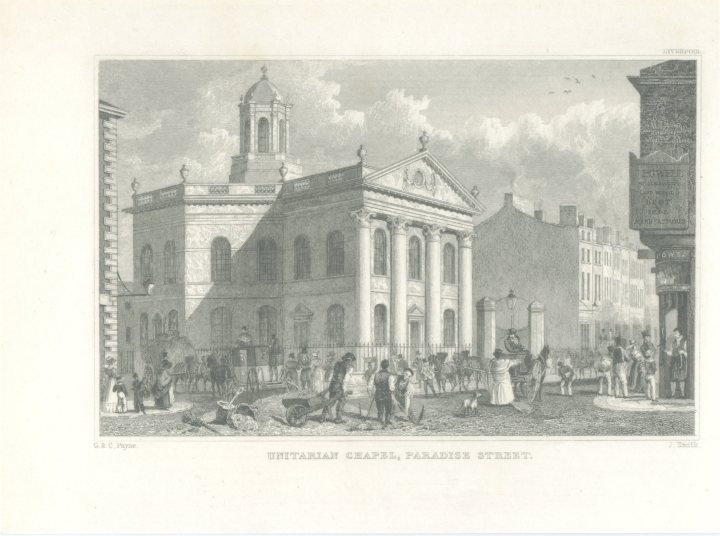
Paradise Street, Chapel
I have written before about this chapel which had an unusual history and ended up as a music hall. To some extent it enshrined the fortunes of this city centre street – from a well to do residential neighbourhood with its fashionable chapel and the home of the first US consul, to a seedy street with a licentious and dangerous reputation. Later still it became a commercial area (and the old chapel a warehouse) and later still Nazi bombs in 1941 finished off what was left and prepared the ground for the 1970s car parks and cheap hotels.
Click on the above image to read about the history of Paradise Street Chapel/Royal Colosseum
So let’s compare then and now views of Paradise Street.

Paradise Street April 1973
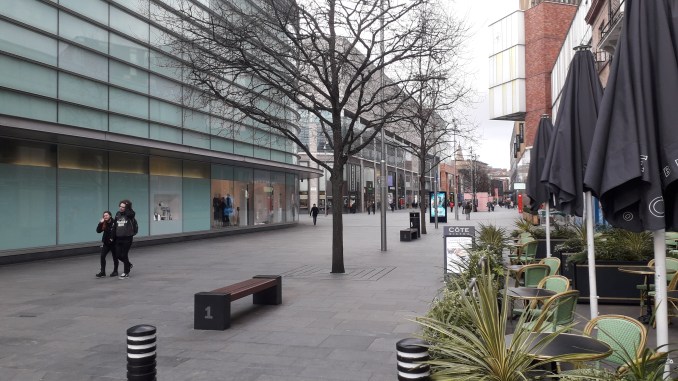
Paradise Street February 2020
The only buildings which remain are at opposite ends of the road. On the right in the 1973 picture is a red-brick building and the Eagle pub. The red-brick building is still there and is today a tapas bar, but you can’t take a picture from the same spot because there is so much furniture outside. Just visible next door is what was the Eagle pub, originally the US Consul’s house and which still carries an American eagle above the front door. Everything else has been redeveloped except for the post-war building at the far end of the street behind which the tower of the Municipal Buildings on Dale Street can still be seen. This was for many years Horne Brothers, the gentleman’s outfitters. In my youth I had to be a customer there because they had a monopoly on the provision of uniforms for my school. An at least annual visit there was inevitable. But I had another connection with Horne Brothers in that I was sent to the barbers shop in the basement to get my hair cut. This was done by Mr Cannon, one of the team of barbers who worked in the gloom of the basement. You had to make an appointment and my appointment was always with him. Unknown to me then it was Mr Cannon who first cut the hair of the Beatles. In volume one of Mark Lewisohn’s excellent book All These Years he tells how when Brian Epstein took over their management he sent them to Mr Cannon to get their first Beatles hair cut. Had I known anything of this back in the 1970s I would have asked him about it, but such things were of little general interest in the 70s. But although the building is still there Horne Bros has long gone, it was turned into a McDonalds years ago.
No pictures or text may be reproduced from this site without the express permission of the author.
